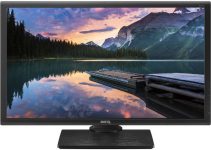Besides being a leading colour grading suite for many years, DaVinci Resolve 12 is now an extremely powerful fully fledged editing platform as well. Yet, as any other software, it also comes with its quirks and specifications. If you are currently used to the editing workflow in Premiere Pro CC, you will probably find that many of the editing tools in DaVinci Resolve behave a little bit different. As usual, you’ll need to spend some time before you can adapt to Resolve’s editing workflow and switch to it completely, just as you would do with any other NLE.
In the video ahead Alex Jordan from Learn Color Grading discusses the main differences between Davinci Resolve 12 and Premiere Pro to help editors who are used to Premiere transition to Resolve easier and quicker.
Unlike Premiere Pro CC, DaVinci Resolve provides three main edit modes – Normal, Trim and Razor Edit Mode. Depending on the mode you choose, the edit tools in DaVinci Resolve change their behaviour accordingly. For instance, by using the Normal Edit Mode you can remove and resize clips in the timeline, roll edits and do other basic editing tasks. Whereas the Trim Edit Mode will let you slip, slide, ripple and roll edits by dragging different parts of clips in your timeline without leaving any gaps between the cuts.
The Razor Mode simply lets you cut the clips to certain points, just as you would do in Premiere Pro or FCP-X. What determines the type of trim is where you place the mouse. Keep in mind that even the behaviour of the shortcuts you are using is going to change when you toggle between the different modes.
Keyframing in another feature that differs in the way it can be accessed and controlled in comparison to the keyframing workflow in Premiere Pro CC. To control any effect and change its parameters you need to access the Inspector first where you will find most of the parameters that you can automate. This is the central area for modifying editing effects’ parameters related to compositing, sizing, titling, transitions, generators and effects of all kinds.
The main difference is that you won’t be able to see the keyframes on the right side of your Inspector panel. Instead, you have to click on the small icon placed in the bottom right corner of your clip to access and modify the keyframes you’ve just created in the Inspector itself.
To change the dynamic playback of your timeline unlike Premiere Pro CC you need to navigate to Playback>Proxy Mode and then choose one of the three available options – Off, Half or Quarter Resolution
Another major difference between the two platforms is that you won’t be able to find any colour tools in Resolve’s Effects Library simply because you have a dedicated Colour Page that provides all the tools and assets you will need to modify the look of your clips. Simply pick a certain clip in your timeline, head on over to the Colour Page and do all the colour adjustments and tweaks right in there.
Furthermore, if you want to render a certain clip in your timeline to play it smoother while you are editing you need to right-click over the clip and choose Render Cache Clip Output in the drop down menu. To be able to do that you need to enable caching first. Navigate to Playback in the top menu, go to Render Cache and then choose User.
The management of your media in DaVinci Resolve’s Media Pool is also organised in a different way in comparison to Premiere Pro. For instance, you can’t mix the bins with the actual media files and each time you create a new bin you will find it on the left side of the Media Pool apart from the current location of your media files. You also have the ability to create Smart bins that enable you to automatically manage your clips based on metadata tags related to each clip.
These are only a fraction of the differences you will find in DaVinci Resolve 12, but generally, they should help you to switch to editing in Resolve 12 easier and faster making the transition between the two NLEs as seamless and flawless as possible.
[source: Learn Color Grading]
Disclaimer: As an Amazon Associate partner and participant in B&H and Adorama Affiliate programmes, we earn a small comission from each purchase made through the affiliate links listed above at no additional cost to you.
Claim your copy of DAVINCI RESOLVE - SIMPLIFIED COURSE with 50% off! Get Instant Access!





